Medieval manuscript quires
Quires, or gatherings, are the little "booklets" that are joined together to make a whole book.
And our mission this week is to practise building quires for our manuscript.
Let's take a look at some examples of the features of quires!
sources of inspiration
It's quite a treasure hunt digging through manuscripts and/or their descriptions to find some of the features of quires, but I found these examples:
First, two stubs of a bifolium just visible between the leaves:
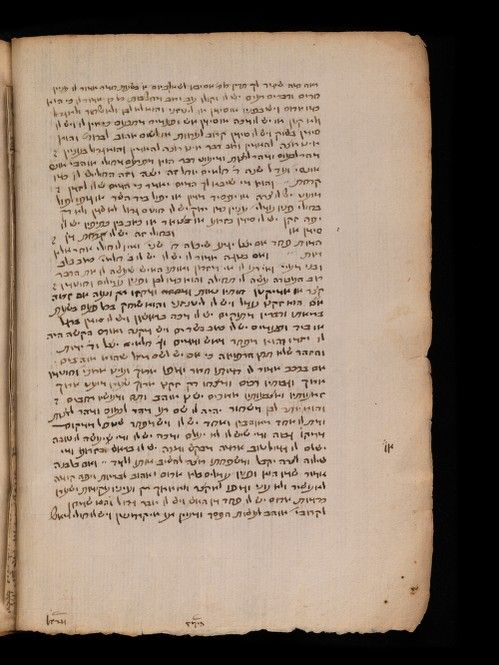
Basel, Universitätsbibliothek, R IV 2, f. 22v – Astrological,
philosophical and medical miscellany
(https://www.e-codices.ch/en/list/one/ubb/R-IV-0002)
A thread tacket, used to hold a quire together, can be seen under the bottom of the page:
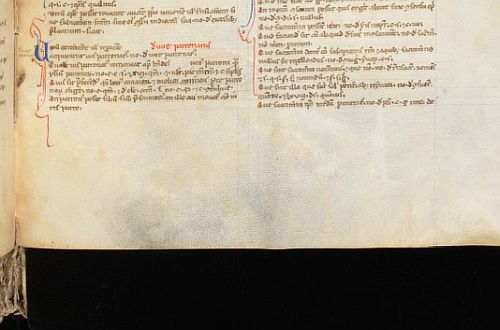
St. Gallen, Stiftsbibliothek, Cod. Sang. 745, f. 39 – Johannes de Deo:
Liber iudicum · Bonus Johannes: Ordo iudiciarius · Manfredus de
Arriago: Tabula decretalium · Dinus de Mugello: Super regulis iuris
Libri Sexti (https://www.e-codices.ch/en/list/one/csg/0745)
Here's an example of quire signatures, which in this case consist of letters and numbers denoting the order of the quires. There's bi - telling us that this is the second quire, b, and the first folio, Roman numeral i:
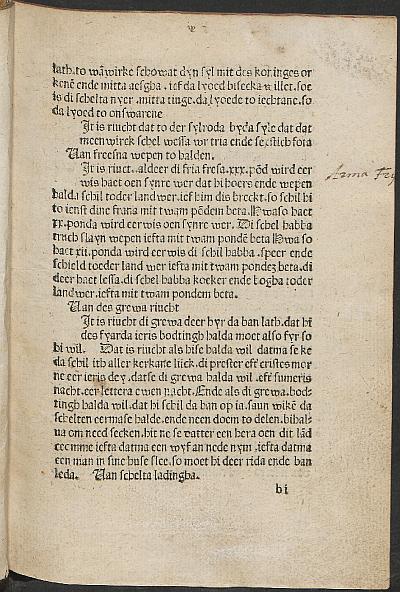
And the second quire again with the second folio, bii:
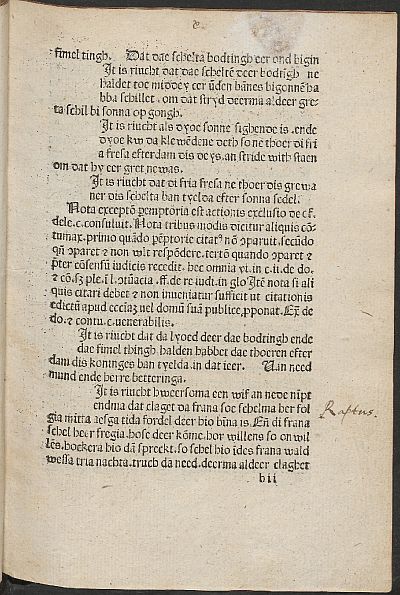
Source: Freeska landriucht (1486). Drukker van het Freeska Landriucht
And lastly, here is an example of a catchword. The last word of the previous page of the quire refers to the first word of the text on the first page of the next quire:
Source: Trinity College Cambridge, R.3.60 ff.20v-21r
building quires
The bifolium
The basic building unit of a quire is the bifolium (plural, bifolia.)
This is simply a sheet folded in half once - just like a birthday card, for example:
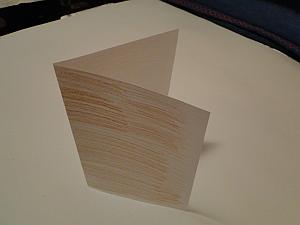
The bifolium thus has two leaves (hence, bi+folium) and each of these leaves has two sides, making for four pages.
I have shaded one side of my "parchment" to show the hair side; the lighter side is the flesh side of the skin of the animal.
*** I'm saving my coffee-painted parchment for a little later as I don't have enough of it to make all the examples here and I want to see how the process works before I start to chop it into sheets :) ***
The quaternio
The quaternio is a quire that has eight leaves (or folia) and sixteen pages.
Below, we will see how to make a quaternio
- using four sheets, each folded once - using four bifolia, in other words, which was the most common way of constructing quires
- with two sheets, each folded twice
- with one sheet, folded three times!
How to build a quaternio using four sheets, folded once
Method 1: You can simply stack four unfolded sheets on top of each other and fold the stack in half:


Notice how you have to arrange the darker hair sides and the lighter flesh sides so that if the hair side is the first page of the quire, for example, then two flesh pages will be facing you when you open the quire:
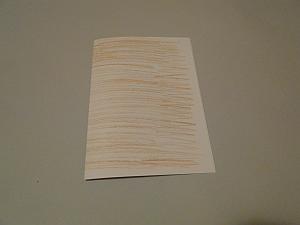
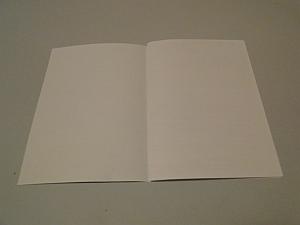
This pattern, hair to hair and flesh to flesh, is known as Gregory's law, named after Caspar René Gregory who is credited with spotting this phenomenon.
Method 2: Alternatively, fold each sheet once and insert one into the other:
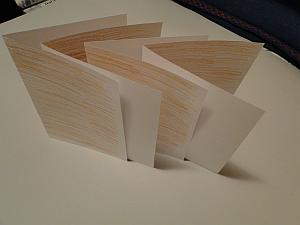
Building a quaternio with two sheets, folded twice
Method 1: Fold each individual sheet in half once separately - hair side outside on one, flesh side outside on the other:

Insert one into the other; fold once more:

I numbered the pages - quite tricky:

Open out the centre sheet and you can see the numbering of pages and the direction of the text that needs to be the same way up as the numbers:

Method 2: Fold each individual sheet twice separately - both have hair sides outside:
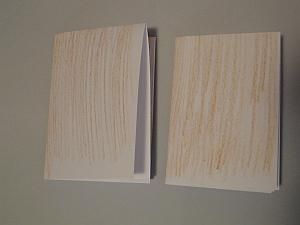
Insert one into the other:

I have cut the top folds and added a tacket of thread to keep the pages together:
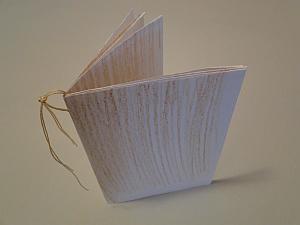
Let's imagine this will be the 7th quire of the manuscript.
I have added a signature to the centre of the lower margin of the last page of the quire:
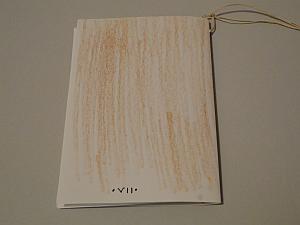
Method 3: Put one sheet on top of the other - hair side facing top and bottom, flesh sides together on the inside.
Fold in half; then fold in half again:

Here is another example of ordering the quires: a catchword - the first word of the next quire is written on the lower margin of the last page of the previous quire, and I have used the same word that was used in the example near the top of the page:
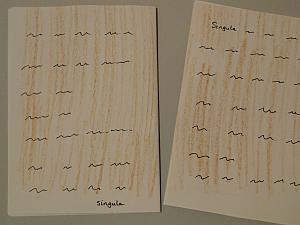
Building a quaternio with one sheet, folded three times
Two possibilities here - fold the sheet either widthwise or lengthwise:
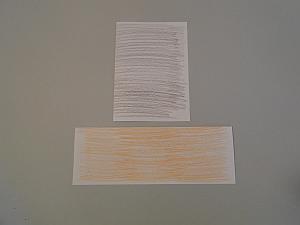
Fold in half two more times, to make eight leaves and sixteen pages. These quires are known as being in octavo format as they consist of one leaf folded three times to make our quaternio of eight leaves and sixteen pages:

As you can see, the different folding methods have produced differently formed quires.
Let's number the pages of one of our quires so as to prepare its pages to see their order and the direction of writing:
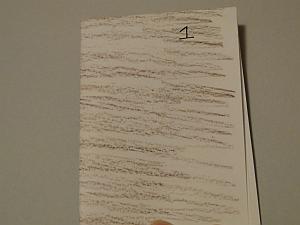

Opening out the sheet shows order and direction of pages and text respectively:

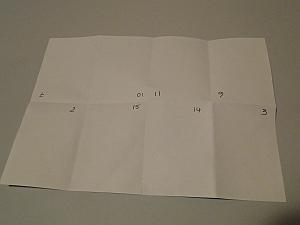
The page order of the other quire is different, having been folded in a different manner.
When folding with one sheet, Gregory's Law is always adhered to automatically, so that's one less thing to worry about :)
I am going to cut the folds of my other quire and secure its pages with a tacket:
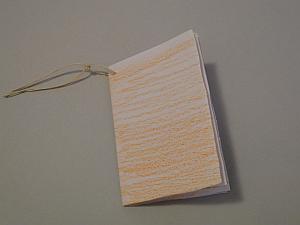
irregular quires
Of course, not every manuscript was made up of identically built, regular quires; sometimes a page - or a few extra pages - needed to be added.
Example 1: The double sewing quire
This is a quire that has another quire popped inside it, a quire-within-a-quire if you like.
There might even be two quires added to the original quire. The added quires would normally be quite thin, though, using one bifolium or two.
Here's an open quire:
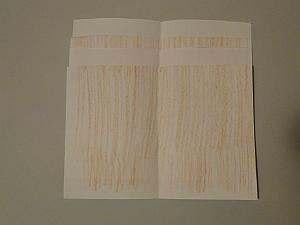
There is a bifolium that needs to be added to the quire - it will be slotted in between the pages:
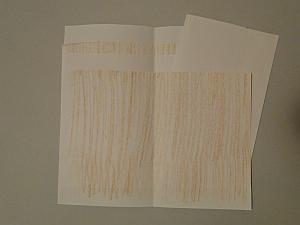
Here is the view of the quire with the added bifolium:
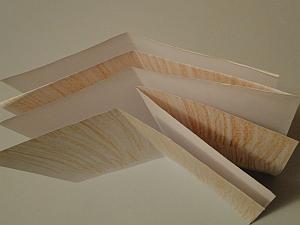
Example 2: The stub guard
Another way to add an extra leaf or leaves to the quire was by sewing a long, narrow piece called a stub guard onto the quire; here is my quire at the bottom, with the narrow stub guard and extra leaf at the top:
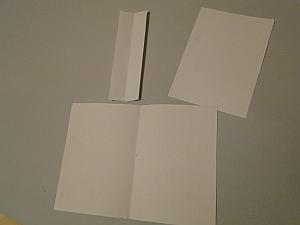
After the stub guard and quire are sewn, the extra leaf is sewn or glued onto the stub guard:
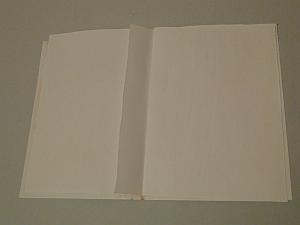
my quires
Having worked through making some test quires, I chopped my large sheets of card into eight A4 sized sheets:
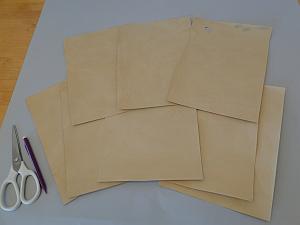
I made four quires, which are A6 size.
Each quire was made with two sheets. Each sheet was folded twice, then one sheet was inserted into the other, as described above.
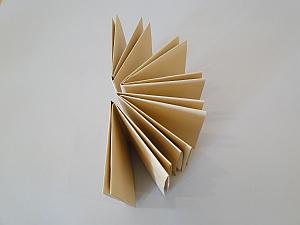
I then cut the folds at the top of the quires. I added a tacket to the first quire:
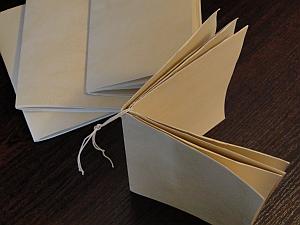
Well! I'm sure this was only the tip of the iceberg as far as quires are concerned, but it was certainly a good workout for the brain :)
Thanks for reading, and see you next time when we will be preparing our pages for writing!